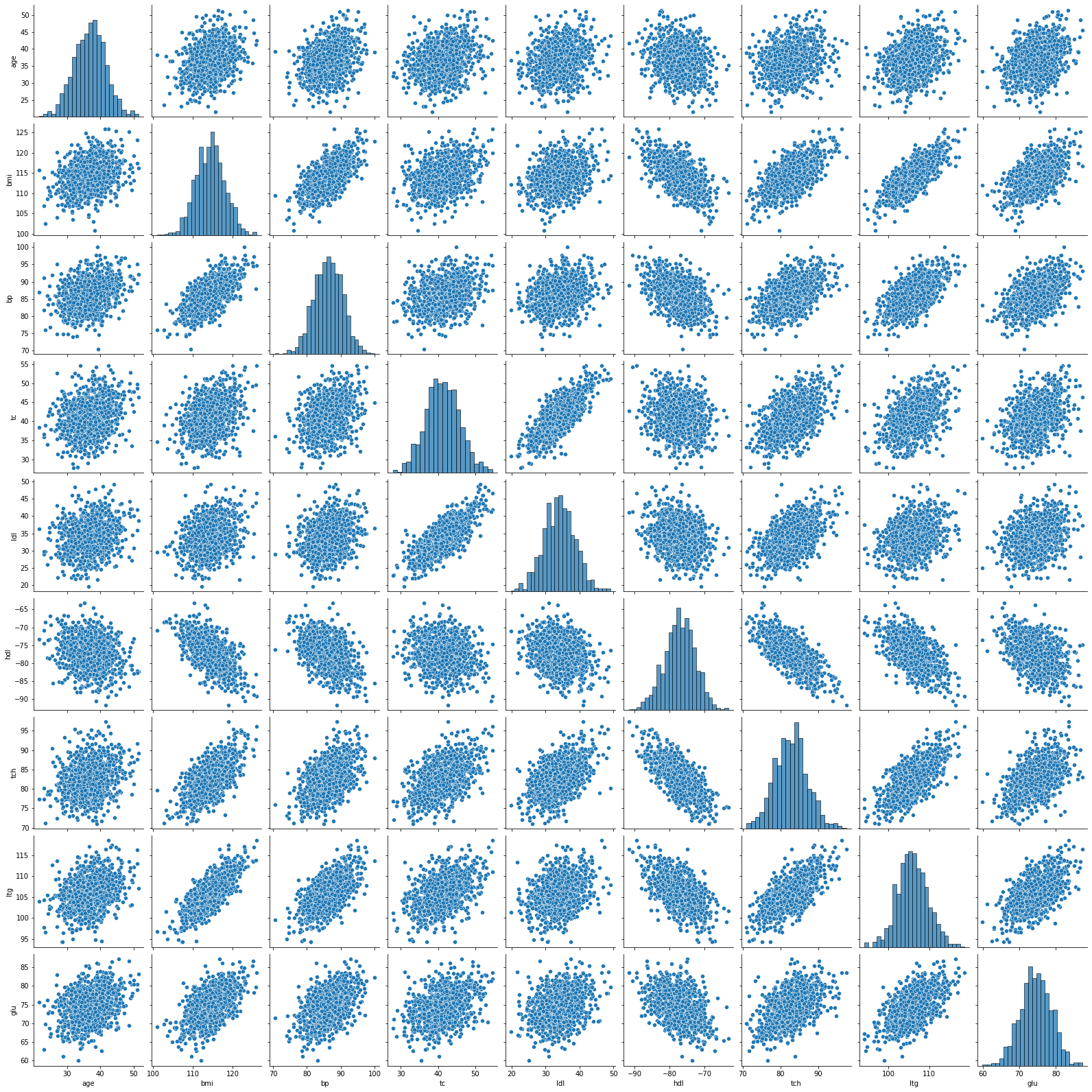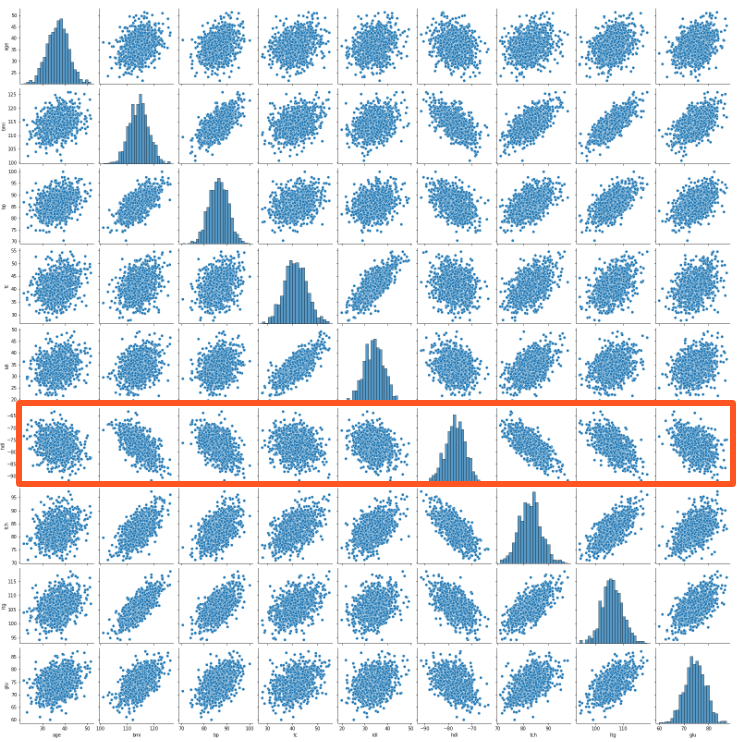Visualizing simulation results
Monte Carlo Simulations in Python

Izzy Weber
Curriculum Manager, DataCamp
Answering questions using Monte Carlo simulations
What are the differences in the predicted y values for people who are in the fourth quartile of each predictor compared to the first quartile?
Starting with the simulated results
df_summary.head()
| | age | bmi | bp | tc | ldl | hdl | tch | ltg | glu | predicted_y |
|---|-----------|-----------|------------|------------|------------|-----------|----------|----------|------------|-------------|
| 0 | 54.491842 | 32.512362 | 82.131464 | 203.075420 | 114.043050 | 44.820017 | 5.137683 | 5.254633 | 100.815909 | 209.297688 |
| 1 | 66.380490 | 29.380708 | 98.810054 | 136.474760 | 68.457982 | 51.691298 | 3.455412 | 4.572478 | 96.117969 | 177.081339 |
| 2 | 59.003285 | 27.015225 | 92.195168 | 242.796424 | 126.541644 | 86.050629 | 2.423928 | 4.640063 | 87.485747 | 123.192425 |
| 3 | 34.803821 | 20.961365 | 86.852597 | 168.762268 | 110.113823 | 53.158621 | 3.925988 | 4.080205 | 79.187999 | 84.284908 |
| 4 | 56.732615 | 32.682115 | 118.384860 | 226.152964 | 136.838283 | 46.467736 | 4.376397 | 5.374001 | 104.184429 | 244.900141 |
Answering our question
dic_diffs = {} for var in ["age", "bmi", "bp", "tc", "ldl", "hdl", "tch", "ltg", "glu"]: var_q25 = np.quantile(df_summary[var], 0.25) var_q75 = np.quantile(df_summary[var], 0.75)q75_outcome = np.mean(df_summary[(df_summary[var] > var_q75)]["predicted_y"]) q25_outcome = np.mean(df_summary[(df_summary[var] < var_q25)]["predicted_y"]) y_diff = q75_outcome - q25_outcomedic_diffs[var] = [y_diff]df_diffs = pd.DataFrame.from_dict(dic_diffs) df_diffs.head()
age bmi bp tc ldl hdl tch ltg glu
0 36.721 114.462 87.101 42.625 35.413 -77.653 82.835 105.611 74.744
Simulating 1,000 times
df_diffs.head()
age bmi bp tc ldl hdl tch ltg glu
0 30.045 108.973 81.107 36.728 31.060 -75.885 79.829 101.231 67.215
1 36.860 112.486 86.164 39.596 33.970 -71.609 77.367 100.964 72.301
2 30.387 110.651 79.972 44.655 39.583 -74.377 82.354 103.808 71.804
3 35.047 113.609 83.241 34.706 23.764 -75.798 83.070 102.119 75.230
4 31.050 109.022 81.727 41.590 31.136 -73.955 80.866 101.668 74.225
- This DataFrame has 1,000 rows: one row for each set of mean difference from each of the 1,000 simulations
Pairplot
sns.pairplot(df_diffs)

Pairplot
sns.pairplot(df_diffs)

Clustermap
sns.clustermap(df_diffs.corr())

Converting to long format
- DataFrames in long format often contain two columns: the variable name and the other the corresponding value
df_diffs_long=df_diffs.melt(value_name="y_diff",
value_vars=["age", "bmi", "bp", "tc", "ldl", "hdl",
"tch", "ltg", "glu"])
df_diffs_long.head()
variable y_diff
0 age 30.045
1 age 36.860
2 age 30.387
3 age 35.047
4 age 31.050
Boxplot
sns.boxplot(x="variable", y="y_diff", data=df_diffs_long)

Let's practice!
Monte Carlo Simulations in Python

